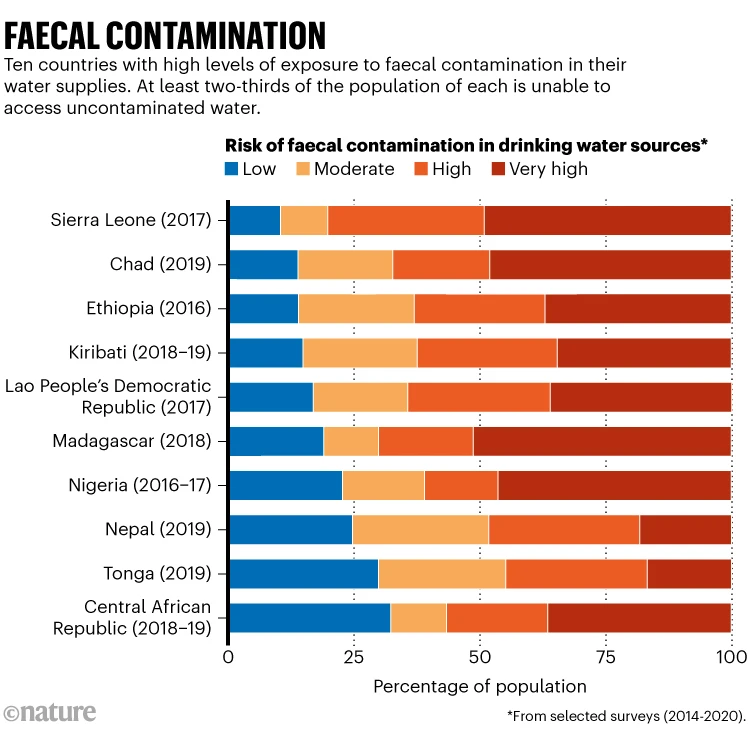by MIRYAM NADDAF

Hundreds of millions of people lack access to safe water and sanitation. Will the first UN conference on water in nearly 50 years make a difference?
The United Nations water conference starts tomorrow. Co-hosted by the Netherlands and Tajikistan, the three-day event will take place at UN headquarters in New York and will be the first such event in nearly half a century. During that time, a rising number of people around the world have gained access to safe water and sanitation (see ‘A tale of two halves’) — except in sub-Saharan Africa (see ‘The neglect of Africa’), where the numbers without safe drinking-water services are greater than they were in 2000. Globally, around 500 million people are compelled to use open defecation, and millions more rely on contaminated water supplies. Can this conference make a difference?
Why has it taken the United Nations 46 years to organize a conference dedicated to water?
The simplest answer is that water (as a standalone topic) has not been high on the international sustainable-development policy agenda — at least, not until now, says Rachael McDonnell, deputy director-general for research for development at the International Water Management Institute, based in Rome.
The first UN water conference took place in Mar del Plata, Argentina, in 1977. Representatives of 118 countries and territories met over 12 days and issued the Mar del Plata Action Plan, which recommended that countries achieve universal clean water and sanitation by 1990 to avoid a global water crisis by the end of the twentieth century.
Several low-income countries asked for financial support, but were rebuffed, and instead a study was proposed on how to finance water projects, as Nature reported at the time.
In 2015, the international community set a 2030 target (under the UN Sustainable Development Goals, SDGs) for providing clean water and sanitation to all. As of 2020, some 2 billion people still lacked safe drinking water in their homes, and around one-third of people did not have basic handwashing facilities at home, according to data from the World Health Organization (WHO) and the UN children’s agency UNICEF. At current rates of improvement, 1.6 billion people will still lack safe drinking water at home by the 2030 deadline.
Nature for more
